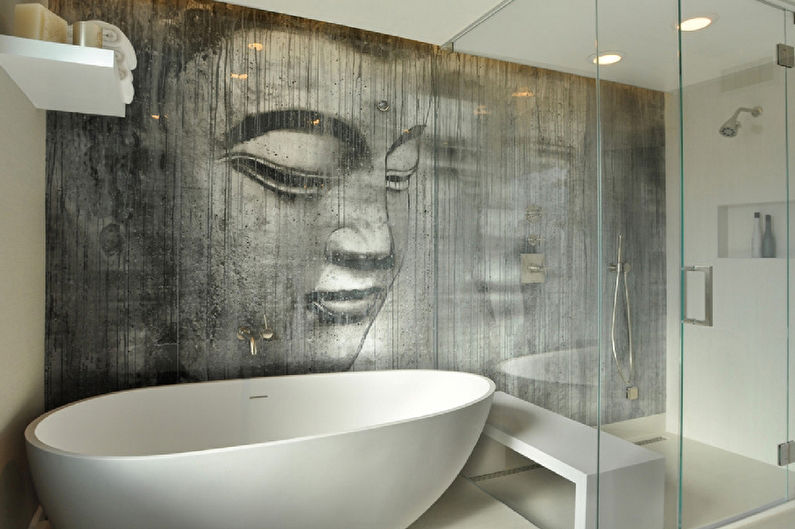
How can you choose the right materials for bathroom wall finishing to make the room look beautiful, safe, and easy to clean? Which materials can consistently withstand the effects of moisture, steam, temperature changes, and the aggressive impact of cleaning agents? In this article, we’ll explore 10 materials to design your bathroom and create a truly top-notch ambiance.
Ceramic Tile
Let’s start with a classic! Ceramic tile is often the go-to choice for bathroom wall finishing. They come in various shapes, types, and colors. You can find rectangular, square, hexagonal tiles, glossy or matte, with texture or with special decorative applications. The list of potential characteristics goes on.
Manufacturers go the extra mile to meet any customer needs. For instance, many release tiles in series. This way, you can pick wall, floor, and decorative tiles from the same set. They’ll all share a consistent style, and their colors will perfectly match.
A stylish design option is combining monochromatic with colorful coverings, like white with patchwork patterns. Mediterranean or other authentic designs also pair well with white ceramic tiles, giving the room a distinct vibe.
A trendy look is the blend of white with wood tones, a design idea stemming from eco-friendly trends. This style eliminates the sterile feeling that might arise in an all-white bathroom.
When considering ceramic products, mosaics deserve special attention. They’re a bit tricky to install, but the end result is worth the effort. With these tiny tiles, you can craft elegant designs for the shower area and sink. Moreover, with specially designed sets, you can even create small patterns or full-blown art pieces in the bathroom.
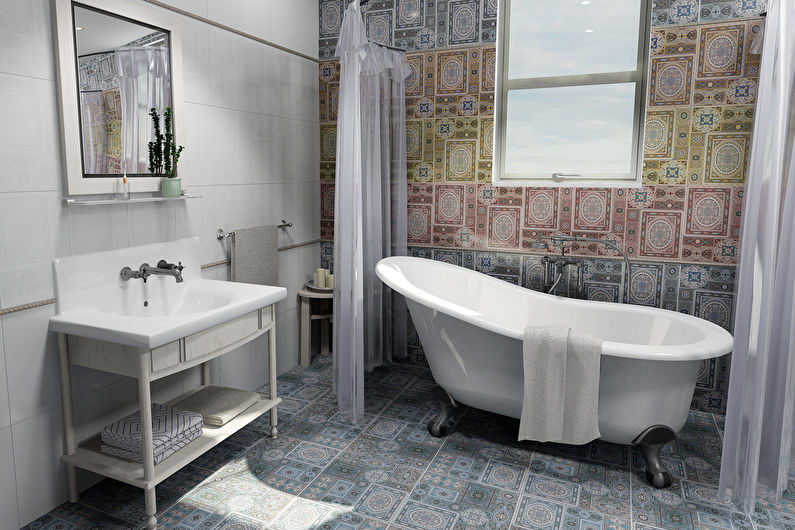
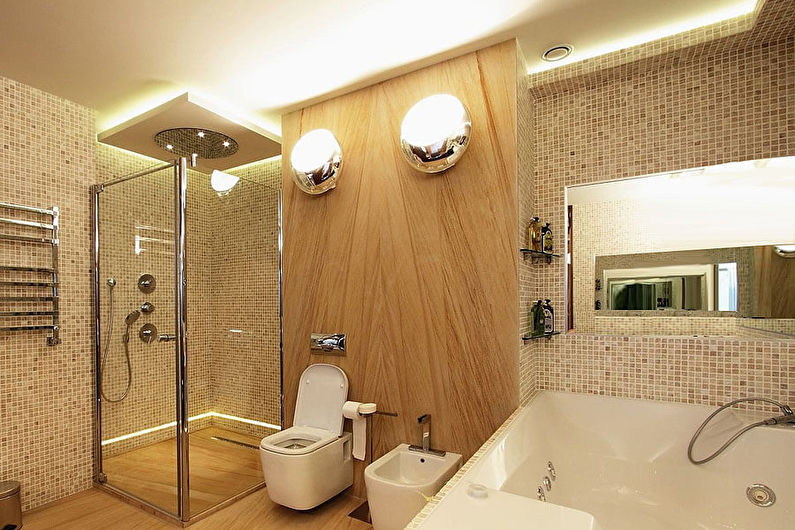
Paint
Painting is another popular method for finishing bathroom walls. Typically, experts recommend using water-based acrylic or semi-gloss paint made from acrylic copolymer. When choosing, check the instructions on the packaging. It usually provides a detailed material description, indicating its resistance to moisture and cleaning agents.
Compared to various tiles, paint is a more affordable option, and it’s much easier to apply. However, remember that painted surfaces can still be affected by humidity. Thus, it’s better to use paint in combination with other finishing materials, or in situations where the plumbing ensures that walls won’t be in constant contact with water.
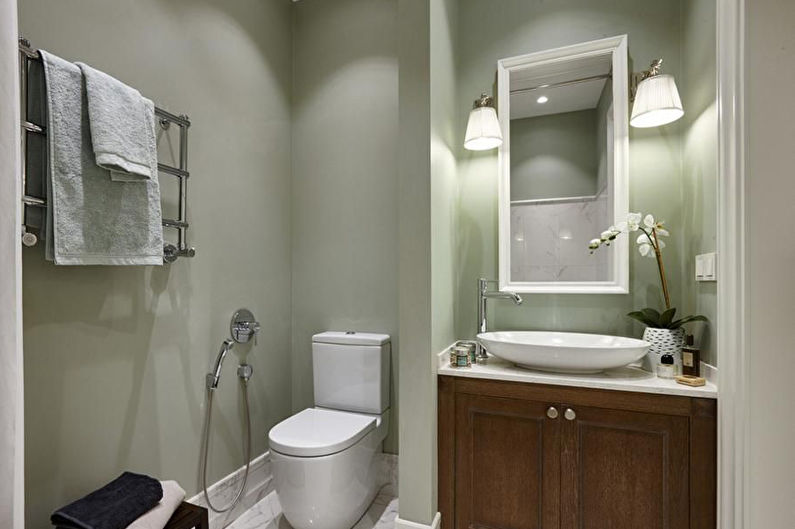
Decorative Stone
Thanks to the trend of decorating interiors with natural materials, stone is increasingly becoming a popular choice for bathroom wall finishes. However, genuine material and its proper installation can be quite expensive, not something every homeowner can afford.
As an alternative, manufacturers have started producing high-quality artificial substitutes. Visually, it looks very much like the real deal. Additionally, unlike real stone, the artificial one is much lighter in weight, making it easier to install.
In terms of design, it’s worth noting that an overabundance of such expressive materials can negatively impact the overall bathroom interior, especially if the space is small. It’s better to decorate with stone in specific areas or a few smaller zones. For instance, you could create one contrasting wall or design stone-built forms for the bathtub and sink.
When combining different materials, this finish pairs best with paint, plaster, or ceramic tiles. Depending on your project, other options might work as well.
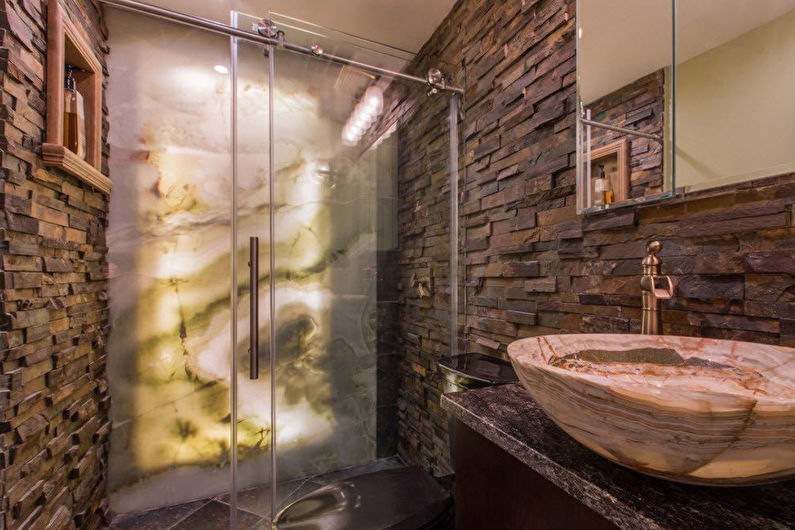
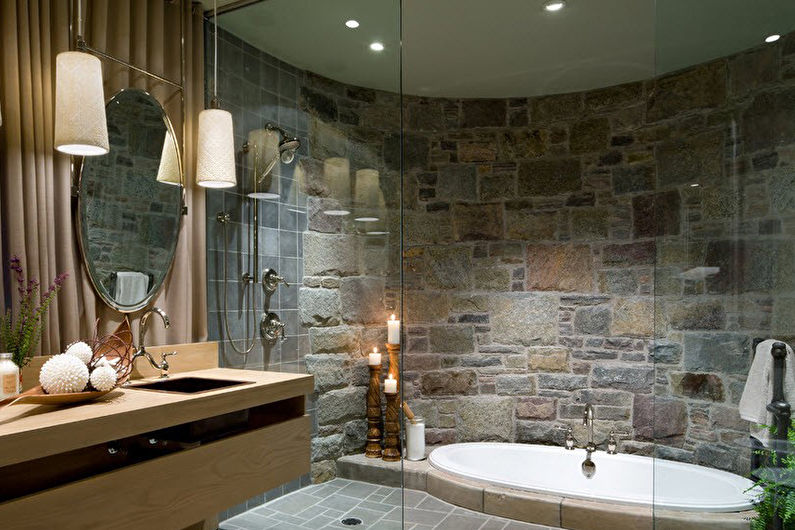
Wood
Just like stone, the use of wood for bathroom decor has risen due to the trend towards natural materials. However, to achieve such a finish, you need to properly prepare the wood using special treatments. You want to ensure the wood won’t rot in a few years, forcing you into another renovation.
Most often, people use wood in the bathroom as a contrasting material to decorate a single wall or specific sections – like the sink area, cabinets, and others.
If you’re not keen on using natural material, you can always opt for an artificial version. It can perfectly replicate the appearance of wood or simply have a wood grain pattern.
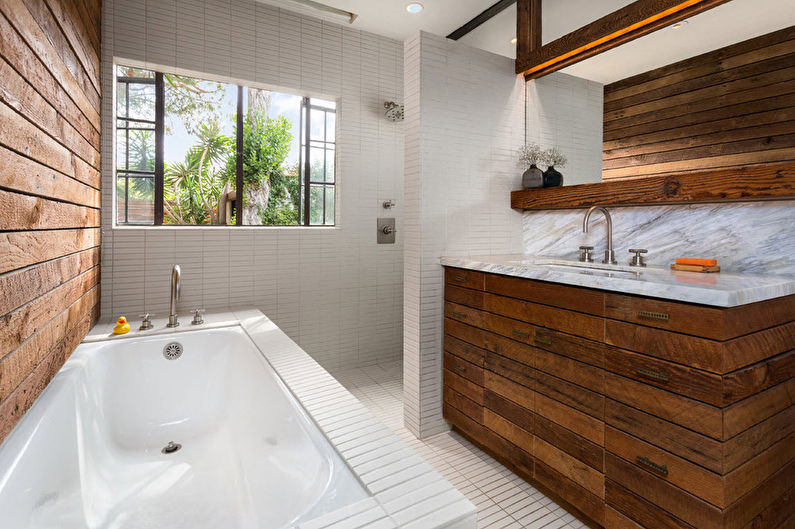
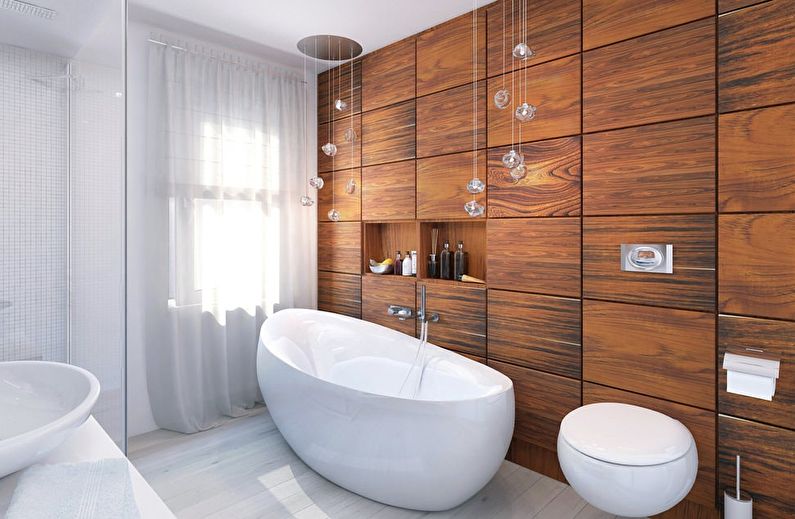
Decorative Plaster
Another unique material for bathroom wall finishing is plaster. You can apply it if the bathtub is partially covered with tiles or another moisture-resistant material, and also if the plumbing doesn’t touch the walls.
To protect such finishes from potential damages, you should cover them with a special protective lacquer or a similar product.
With decorative plaster, you can achieve a soft and cozy Scandinavian style design. Alternatively, you can have a slightly rough surface with a pronounced textured pattern – this look would be perfect for a bathroom designed in a loft style.

Brick
Originally not designed for bathroom walls, brick requires thorough treatment with protective and antiseptic agents.
It’s preferable not to place this material close to water sources. It should mostly serve as a design element. For example, you can decorate specific areas of the room, create contrasting walls, or design niches with it.
The slightly rugged look that brick provides is perfect for creating a Scandinavian or loft style. And when painted white, you can achieve a fascinating classic look, reminiscent of Provence or shabby chic.
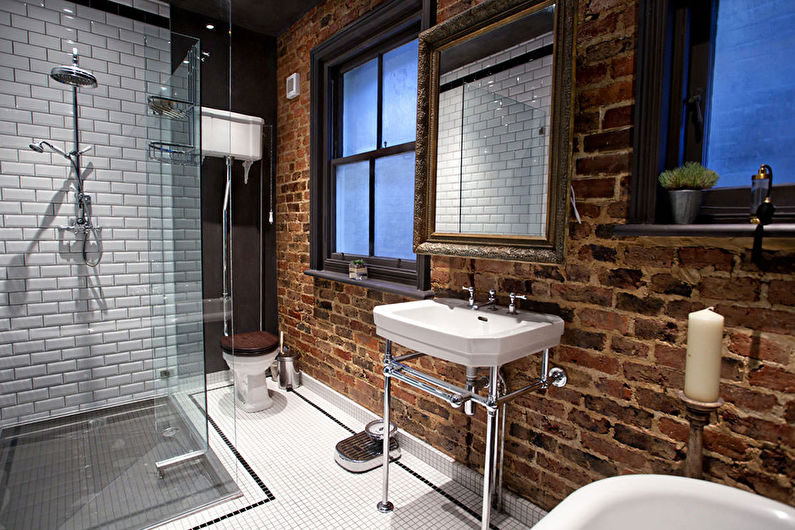
Mirror Tile
If you have a small bathroom and would like to visually enlarge it, consider using mirror tiles. They apply similarly to ceramic tiles, but handle with care since they’re more fragile.
Of course, it doesn’t make sense to fully mirror the space. People usually apply the tiles in sections or on just one wall. It’s important to realize that this type of decoration requires meticulous maintenance. It’s best to place these tiles in areas less likely to get wet, or else you’ll be constantly cleaning them.
When choosing the size of the tiles, keep in mind that larger ones are suitable only for spacious bathrooms. They don’t visually expand the space; instead, they may seem to reduce it. For a smaller bathroom, medium or smaller-sized tiles work best. Moreover, you can opt for mirrored mosaics. Use them as standalone design elements or incorporate them with ceramic or glass mosaic installations.
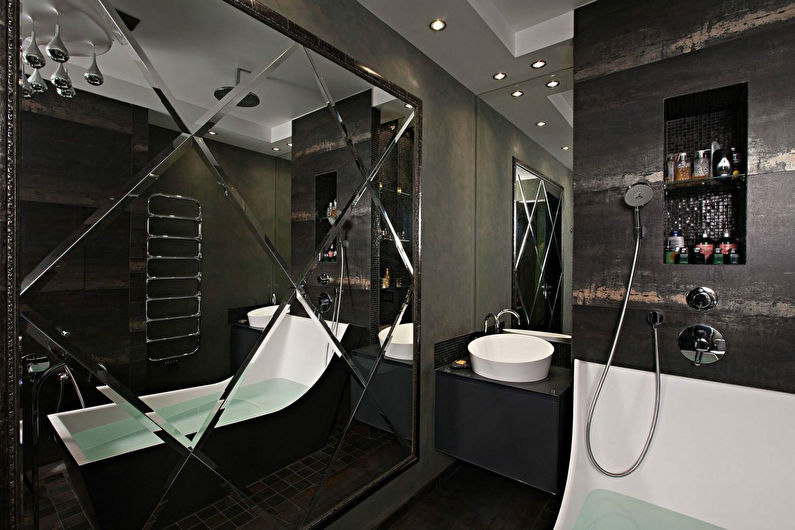
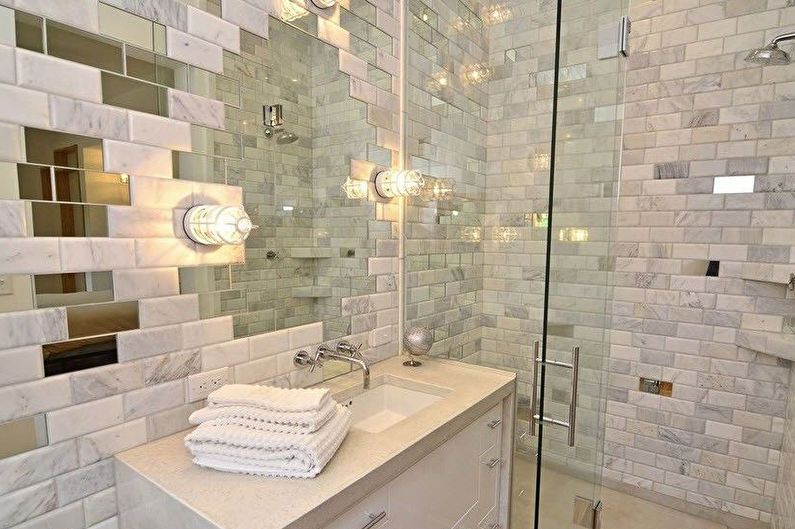
Wallpaper
Surprisingly, you can finish bathroom walls with wallpaper. Just ensure you choose types that resist moisture, like vinyl or acrylic.
In a small space, you could use photo wallpaper on one wall. Depending on the pattern, it can lend a specific stylistic effect to the room. For example, a landscape might give a sense of depth, bright flowers could elevate the mood, while a warm pattern in pastel tones might add a touch of comfort.
However, despite their relative water resistance, always remember that if liquid touches the joining points of two wallpaper sheets, they might start peeling off over time.
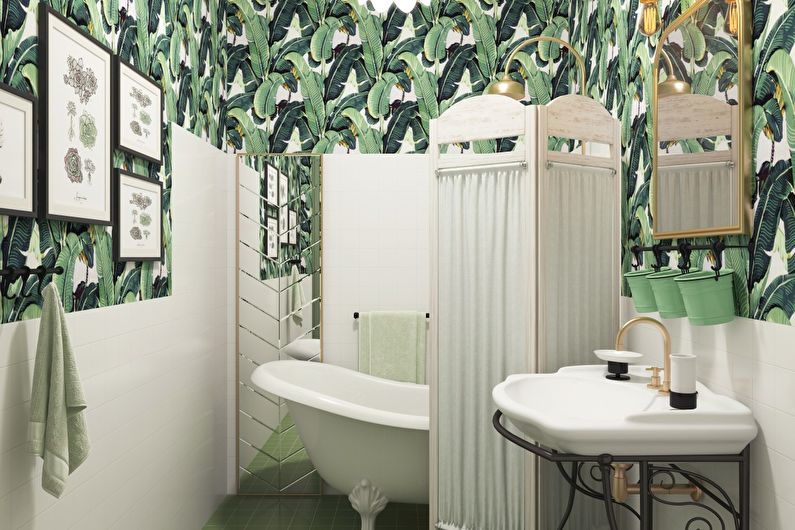
Glass Tile
Relatively recently, glass tile has become another popular wall material for bathrooms. This sturdy and safe covering is made from tempered glass. It holds up well to both cleaning agents and other aggressive impacts.
Manufacturers offer glass tiles in various sizes, from very small to large tiles. They can have different colors or patterns. Furthermore, you can find this material in mosaic form.
Glass Finish
Since glass finishing is impervious to moisture, it can be placed anywhere in the bathroom, including in the shower area or near the bathtub, where water flows.
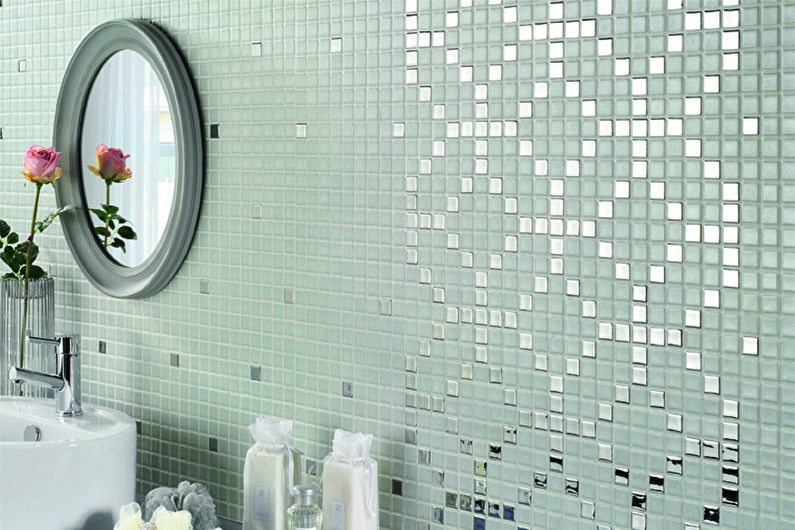
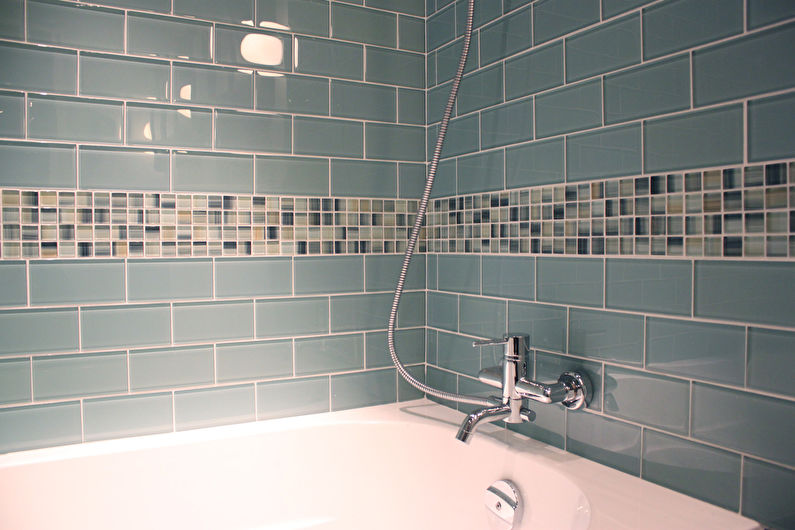
Marble
Marble is one of the most beautiful and expensive materials for bathroom decoration. Apart from its visual appeal, it comes with certain characteristics that one should be prepared for in advance. Understanding these will help maintain its condition and preserve its natural beauty for longer.
The stone has a certain porosity, meaning it can absorb substances that come into contact with it, albeit in small amounts. This implies that if you use colored hygiene products and they spill onto the marble, it might leave indelible stains. Moreover, marble can be damaged by aggressive cleaning agents.
In essence, marble is a “living” stone. It actively interacts with surrounding substances and may change under their influence.
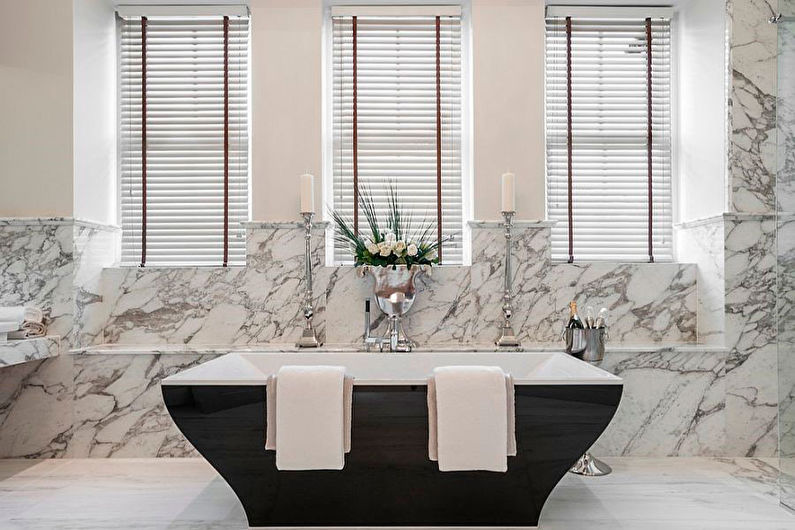
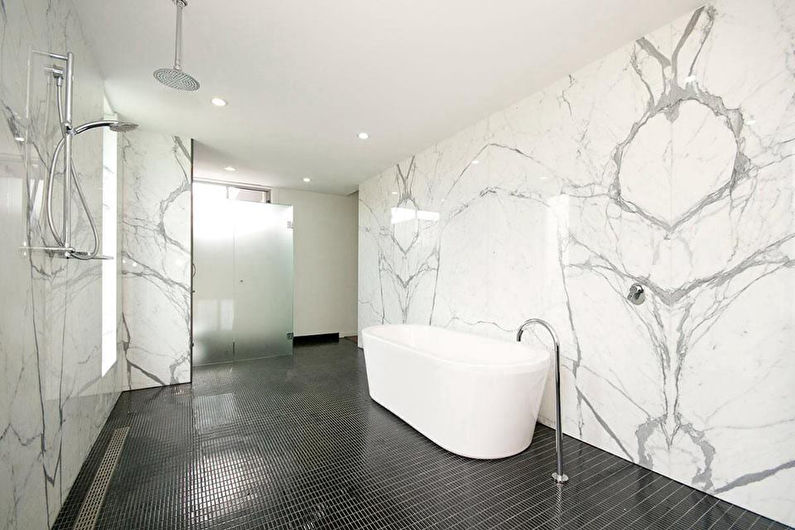
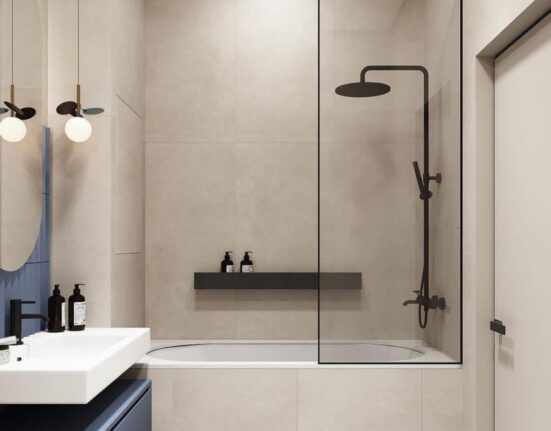
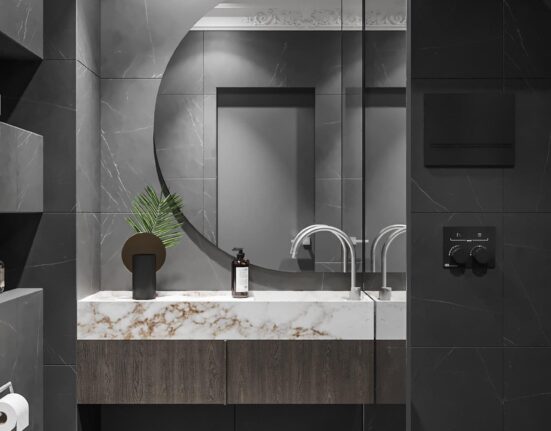
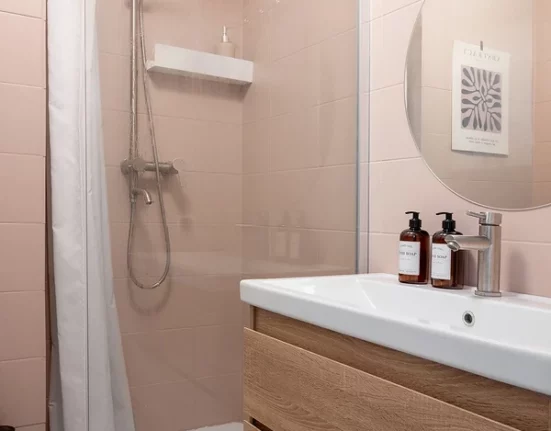


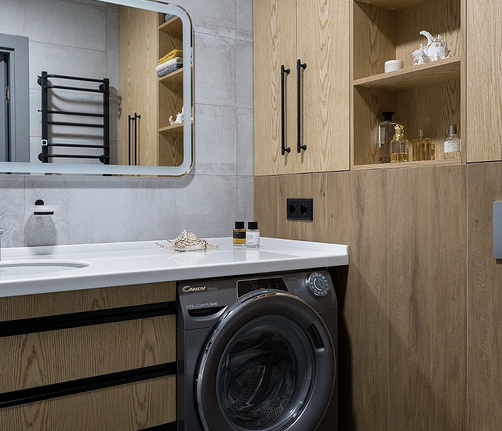
Leave feedback about this